On this page you will find links to the Corporate Policies which details the ���˿���'s expectations and states the requirements for effective management of electrical safety.
There are three Policies, one for Infrastructure, one for Operations and one for Workplace.
- The infrastructure policy is concerned with the fixed installations of buildings, IT server rooms, studio installations and similar.
- The Operations Policy details what the ���˿��� does – location filming, news, drama and the like where electrical systems are largely temporary.
- Workplace has specific requirements for electrical systems managed by ���˿��� Workplace.
The Policies state the overarching requirements and objectives of the ���˿��� with the detail contained in guidance for each subject, such as portable appliance testing or bringing your own device to work. These are given in the individual pages from the electrical home page.
The safe use of electricity can be a complex subject. If you cannot find answers to what you need, please contact your Safety Adviser.
What Can Go Wrong?
Electricity can kill or severely injure people and it causes damage to property, as well as injuries, by initiating fires.
The risk of injury is generally greater with higher voltages. Effects on the person include:
- Stopping the heart beating properly
- Preventing the person from breathing
- Causing muscle spasms and permanent muscle damage, including to the heart muscles.
- Electrical burns
- Eye injuries from electrical arcing (‘arc-eye’)
The risk is not always that of electric shock and other effects include:
- Electrical short-circuits causing explosions and fires
- Fires arising from overloaded circuits
- Fires from battery faults or poor management
Legal/���˿��� Requirements
- The Electricity at Work Regulations 1989 (EAWR) apply in all business operations without exception, even at lower voltages. For example, batteries and similar can store considerable energy and present a fire risk, even though the risk of electric shock is reduced
- The practical application of the EAWR depends on many factors. The ���˿��� guidance on the ���˿��� Safety website is organised into work activities to help staff apply the requirements effectively
- You must never perform, or allow work on or near exposed, accessible, live parts unless it is absolutely unavoidable and suitable precautions have been taken to prevent injury, both to the workers and to anyone else who may be in the area. Work near live parts includes, for example, workers inadvertently exposed to damaged equipment or cables where conductors are accessible. As insulation is so cheap and easily applied (such as a plastic insulating barrier), this requirement verges on that of an absolute duty. Work near live parts will be limited to very rare situations, such as electrical equipment repair facilities or testing of electrical systems by electricians where suitable control measures are in place
- You must disconnect electrical equipment (not just turn it off) if you believe there is a fault and, if possible, remove it from service. It is important to record any occurrences on Safety Hub as a near-miss
- If you ever see anything electrical that looks unusual or something you think is potentially dangerous, you must report it
- All work activities where electrical systems or equipment is being used should be assessed for electrical hazards. In many instances it will be a simple assessment but where electrical risks are greater (e.g. temporary systems subject to damage on location or in studios, use of generators, wet locations) a more detailed assessment will be required. There is guidance on identifying electrical hazards on the Electrical risk assessment and incident reporting page
Division Specific Issues
- ���˿��� Workplace is responsible for inspection and test for the fixed electrical supply and infrastructure in ���˿��� buildings.
- Each division/department is responsible for its own electrical equipment and must have systems in place to ensure that appropriate checks are in operation.
- The facilities management teams can arrange for the inspection and testing (Portable Appliance Tests) of equipment that you plug into the building supply.
Useful documents Electrical Safety Policies
-
[���˿��� Network only] Revision 10. May 2023
-
[���˿��� network only] Revision 8. May 2023
-
[���˿��� network only] Version 4. May 2023
Recommended links
-
Certificate in Temporary Electrical Systems Electrical safety training course designed to ensure those working with electricity in temporary distribution systems on productions can comply with BS 7909
���˿��� electrical safety topics
-

Electrical safety homepage
A selection of guidance documents and general advice in relation to Electrical Safety in ���˿��� premises, on productions and events. -

���˿��� policies for electrical safety
���˿��� policies detailing its overarching approach to the management of electrical safety. -

���˿��� electrical safety guidance documents
Summary of ���˿��� electrical guidance (links within document titles) -
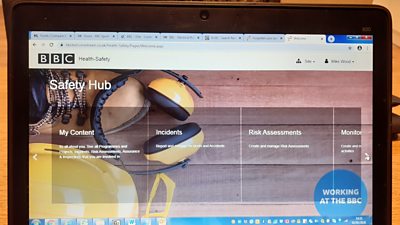
Electrical risk assessments and reporting of incidents
This section will help those who need to do a risk assessment where electricity is being used. It also gives guidance on reporting requirements for any electrically-related incident. -

Electrical safety in ���˿��� Premises
General guidance on use of electricity and electrical equipment when working in ���˿��� Premises. -

Electrical safety in Studios
A straightforward guide to electrical safety management in studios and similar locations. -

Safety of electrical equipment and appliances
Requirements for electrical safety of electrical equipment and appliances (‘PAT testing’). -
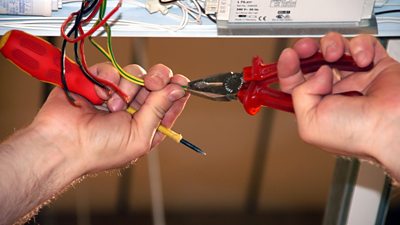
Electrical competency and Part P requirements
Guidance on what to look for when employing contractors or freelancers to do electrical work. -
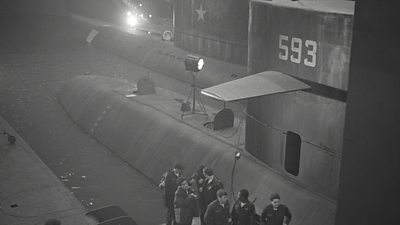
Electrical safety requirements for Production Managers
Find out what you should know and what measures should be put in place for your production. -

Bringing your own equipment to work and contributor’s equipment
Basic guidance on the safe and appropriate use of personal electrical equipment whilst at work and requirements. -
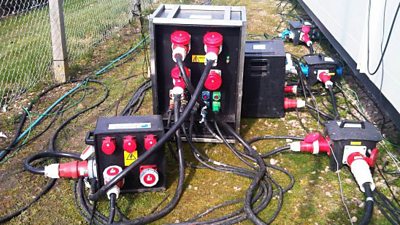
Temporary electrical systems and BS 7909
Requirements for electrical safety management in accordance with BS 7909 for all temporary electrical systems. -

Small and Simple Temporary Electrical Systems
Guidance to help understand the requirements for simple temporary electrical systems such as interviews or photo shoots for example. -
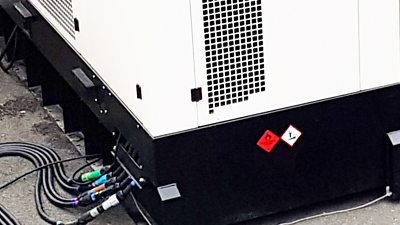
Generators
Guidance on the use of temporary generators including the application of earth electrodes. -
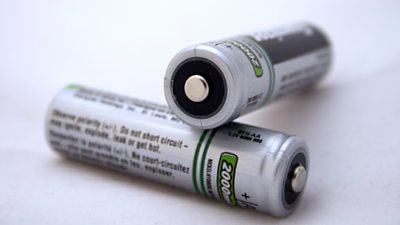
Batteries
Guidance on the safe use and storage of batteries. -
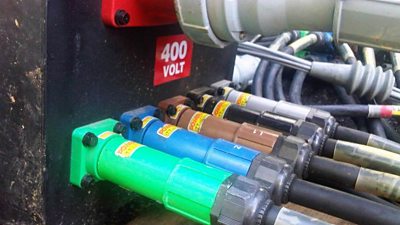
Certificate in Temporary Electrical Systems
An electrical safety training course designed to ensure those working with electricity in temporary distribution systems on productions can comply with BS 7909 and the relevant parts of BS 7671. -
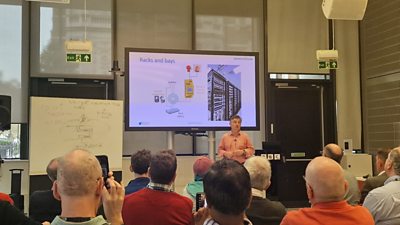 Electrical Principles Workshop to harmonise the approach to health and safety management on electricity across all areas.
Electrical Principles Workshop to harmonise the approach to health and safety management on electricity across all areas. -

External information and guidance on electrical safety
Links providing further information on all aspects of electrical safety, from external bodies (IET, HSE, Etc.) that ���˿��� staff may find useful. Some guidance is required to be purchased. -

Health & safety Alerts and News
All the Health & Safety Alerts and News from the H&S Teams
More from SSR
-
Your platform to record accidents, risk assessments, assurance monitoring and inspections
-
Safety Equipment Stores
Just one number to call: 020 3614 5155 -
���˿��� Safety Guidelines
An A-Z of ���˿���'s Health and Safety Guidelines -
Safety Advice Line: 0370 411 0464 Email: safety@bbc.co.uk
- A-Z of ���˿��� Safety Guidelines
- Accident Reporting and Investigation
- ���˿��� Health & Safety Policy
- Contractors (incl. vetted lists)
- Contributors
- Fire Safety
- Freelancers
- Independent Production Companies
- Risk Assessment
- Safety Alerts
- Safety Responsibilities
- Safety Training
- Sets & Premises Safety Guide
Events guidance - key links:
- Exhibitions
- General Guidance
- Indoor Location Recce Checklist
- Outdoor Location Recce Checklist
- Major Incidents & Emergency Planning
- Marketing and Promotional
- Noise Exposure
- Planning and Management
- Responsibilities
- Responsibilities Form
- Laser Lighting Effects
- Strobe Lighting
- Temporary Stages and Rostra
Health topics - key links:
- (���˿��� network only)
- Contributors Fitness to Participate
- Display Screen Equipment (DSE)
- (���˿��� network only)
- First Aid and Welfare on Location
- International Travel - Risks & Health
- Manual Handling
- Mental Health: ���˿���page
- (���˿��� network only)
- Personal Health and Wellbeing
- Pregnancy
- Psychological Trauma Support & Trauma Risk Management (TRiM)
- Tiredness and Fatigue
- Travel Health Contacts
���˿��� High Risk - key links:
- CBRN and Industrial Spills
- Covert Filming
- Crisis Management and Security Support
- Demonstrations, Protests and Crowds
- Disaster Coverage
- Door Stepping
- (���˿��� network only)
- (���˿��� network only)
- Public Order
- Safety Equipment Stores
���˿��� Journalism - key links:
���˿��� Productions - key links:
- Aerial Filming and Airfields
- Animals: Displaying and handling for performance
- Boats: Working on
- Children and Young People
- Driving
- Electrical Equipment and Systems
- First Aid and Welfare on Location
- Food Safety (Cooking and Catering)
- Remote Location Working
- Roads and Streets: Working by
- Security of Productions on Location
- Stunts
- Tiredness and Fatigue
- Unmanned Aerial Systems (UAS aka Drones)
- Vehicles: Recording in, from and around
- Working at Height: Mobile Elevating Work Platforms
- Working at Height: Tower Scaffolds
���˿��� Radio - key links:
- (���˿��� Network only)
���˿��� Security - key links:
���˿��� Sport - key links:
About this site
This site describes what the ���˿��� does in relation to managing its health, safety and security risks and is intended for those who work directly for the ���˿���.
It is not intended to provide instruction or guidance on how third parties should manage their risks. The ���˿��� cannot be held liable for how this information is interpreted or used by third parties, nor provide any assurance that adopting it would provide any measure of legal compliance. More information
Some links on this site are only accessible when connected to the ���˿��� network
